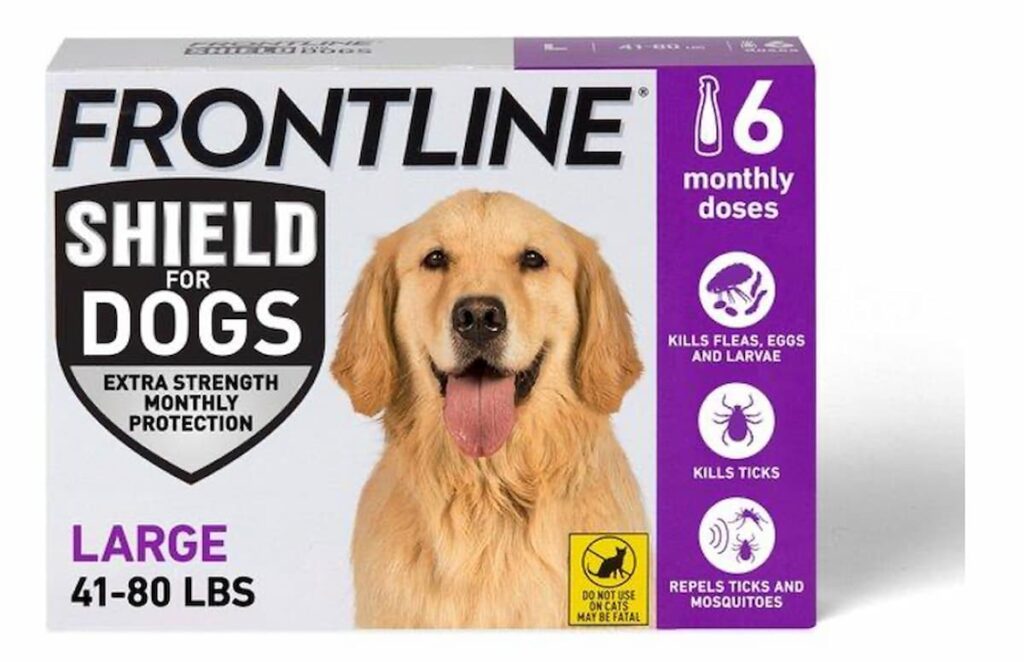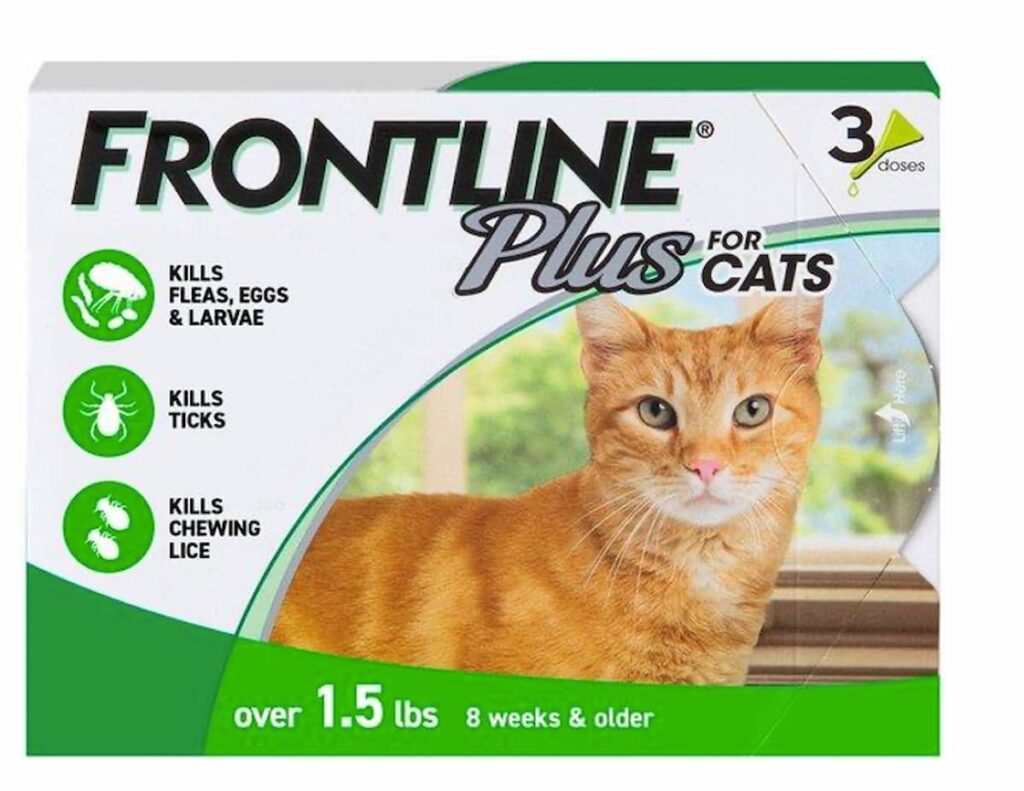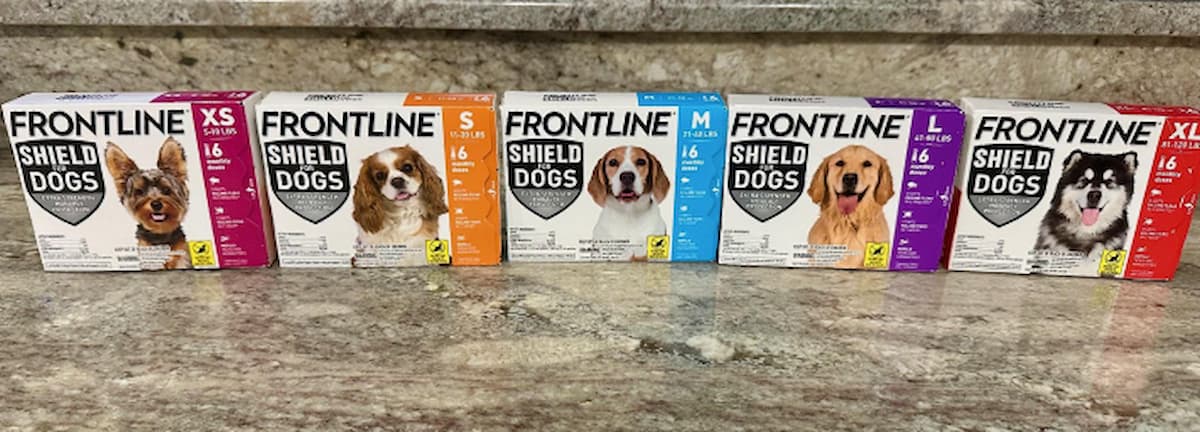Year-Round Flea and Tick Prevention: Why It Matters
Published on August 26, 2025

When it comes to flea and tick prevention in dogs and cats, year-round coverage is important. While many pet parents believe that fleas and ticks die off in the winter, and the risk of catching these parasites over the cooler months is minimal, this isn’t the case.
Fleas can survive low temperatures and often overwinter in warm places like houses and burrows; ticks can be active even in the cold.
I’ve been a vet for nine years, and in that time, I’ve seen plenty of winter fleas, fleas on indoor cats, and tick-borne illnesses that must have started from a winter tick bite. In this article, I’m going to explain why continuous prevention is safer for your pet and more effective in the fight against fleas.
All featured products are chosen at the discretion of the Vetstreet editorial team and do not reflect a direct endorsement by the author. However, Vetstreet may make a small affiliate commission if you click through and make a purchase.
Why Year-Round Flea and Tick Prevention Matters
Fleas have a lifecycle like a caterpillar. An adult lays an egg, which hatches into a larvae, which pupates before turning into a new adult flea. This process can take just a few days, or – when environmental conditions aren’t ideal – several months. This allows fleas to be very flexible, ‘pausing’ their development to wait for better conditions, and they’ve also been shown to survive temperatures of 30oF for short periods.
Between this short tolerance for cold weather, and a flea’s ability to find a warm place and then pause development, there is a year-round risk for flea bites. Just one flea – coming home from a warm burrow or from someone else’s house – can lay up to 50 eggs a day, starting an infestation that can quickly cause misery for pets!

So, what about ticks? Well, many common ticks appear to be extending their range. Some are known to ‘quest’ (actively look for a host) in temperatures as low as 37oF, making them a risk in mild winter weather.
They survive colder temperatures for up to nine months by finding somewhere to hide, then reemerge as soon as the weather gets warm enough, ready to latch on.
With fleas and ticks, it’s not just about the ‘ick factor’ of having parasites on your pet, or even the immediate itchy misery of a flea bite. By feeding on one animal, then another, these parasites transmit diseases.
- Fleas can pass on tapeworms, and a bacteria called Bartonella (which causes disease in cats as well as humans in contact with them).
- Ticks can pass on Lyme disease, ehrlichiosis, and anaplasmosis – all serious diseases that can cause chronic disease in pets (and – in some cases – the humans they live with).
What Vets Recommend for Flea and Tick Protection
The CDC recommends that pet owners use a flea preventative all year round. For most regions and pets, I agree. A break in cover of just a week can cause an infestation to start – a single flea brought in from outside or brought home on clothing from a store or neighbours can lay over 350 eggs in that time. You might not notice it straight away, but a few weeks later, when the adults all hatch from their pupae (cocoons), you’ll know about it – and you’ll have a fight on your hands getting rid of them.
Clearing the infestation can take at least three months of regular treatment on the pet, vacuuming, and sprays in the house.

Or, in that week break, a tick could latch and transmit Lyme disease. Again, you won’t know immediately what’s wrong, but several months down the line you will be dealing with the consequences of the break in protection.
Luckily, there are lots of options for safe flea and tick protection for both cats and dogs. Some require a prescription from your vet, while others are available over the counter (OTC).
There’s something to suit all needs – chewable tablets, collars, and topical treatments (like FRONTLINE® SHIELD for Dogs and FRONTLINE® PLUS for Dogs and FRONTLINE® PLUS for Cats) are all good options for many pets. All are tested for continual use, meaning there’s no need or benefit to giving your pet a ‘break’ from the treatment over the winter.
Common Myths About Seasonal Prevention
Myth: Fleas and ticks die off in winter
Truth: Fleas can survive in temperatures of 30oF or hide indoors, while ticks survive and remain active in mild climates
Myth: My indoor pet doesn’t need flea/tick meds
Truth: Fleas can come in on clothing or other pets; ticks hitchhike
Myth: It’s OK to skip a month or two
Truth: Gaps in protection increase risk of infestation and disease
How to Choose the Right Year-Round Prevention Plan
So now we know the importance of year-round prevention, let’s look at how you can choose the right product for your pet. As we mentioned earlier, there are lots of options for flea and tick prevention for dogs and cats, so it can feel like a minefield. Here’s some things to consider:
- Consider your pet’s risk profile. While year-round protection is recommended for all pets in mild climates, your pet’s lifestyle may change the type of protection that’s suitable. Is your cat an indoor-only cat or a hunter? Hunters need more protection, but a collar is inherently more dangerous for them. Does your dog walk only on the sidewalk, or are they off-leash in the scrub? Long grass and areas where wildlife has access are more likely to carry ticks, meaning your dog’s protection against ticks needs to be top-notch. Does your dog need regular baths, or do they love swimming? If this is the case, a chewable tablet might be the best option.
- Consider how easy your pet is to medicate. Will they eat a chewable tablet? Can you catch them to apply a monthly spot on? Will they resist or remove a collar?
- Consider your routine. If your life is busy, you’re often away with your pet, or you tend to forget, would a long-lasting flea and tick prevention product be more effective? Some people find it easier to apply parasite prevention monthly, while others prefer something that lasts for several months.
In every case, it’s best to choose vet-approved products, and consult with your vet to help you choose something that suits. Always ensure the product you choose is designed for your pet’s species (it’ll say ‘for cats’ or ‘for dogs’ on it) as some popular dog flea and tick preventatives are toxic to cats. Similarly, always ensure you use the right product for your pet’s size/weight – always weigh them accurately before buying a preventative, and never try to split a large tablet or pipette between several pets, as the drug may not be evenly distributed, causing over- and under-dose.

What to Do If You Miss a Dose
Having read above about the importance of year-round protection, and how even a week’s lapse in cover can start a ticking time bomb, you might be worried about the fact you’ve missed a dose.
Never double-dose if you’ve missed a dose of a flea and tick preventative. Double-dosing risks dangerous overdose and won’t make up for lost time. Instead, give the missed dose as soon as the gap is noticed, and resume a schedule of monthly (or three-monthly, depending on your product) application. The sooner you can give the missed dose, the lower the risk of a breakthrough bite or infestation.
Thankfully, the risk of a dangerous tick bite or flea infestation starting during a short break is low. However, you should carefully check your pet for ticks and remove them safely using a tick fork – ask your vet if you need help – then monitor for signs of tick-borne illness (your vet can tell you which diseases are most likely in your area).
Flea infestations can take a few weeks to make themselves known – the product you’ve now applied should catch any hatching adults, but look out for scratching or a dirty coat caused by ‘flea dirt’.

Keep It Consistent to Keep Them Safe
It’s best to apply flea and tick prevention for dogs and cats year-round, to protect your pet from these parasites and the diseases they transmit. There’s a common myth that fleas and ticks aren’t a problem in the winter, but they thrive in indoor environments and can survive low temperatures. Prevention is easier and cheaper than treatment, so talk to your vet to help you devise a prevention plan for your pet that includes winter flea and tick prevention.
FAQs About Flea and Tick Prevention
Yes. Fleas can survive low temperatures and breed indoors, and ticks stay active in cold weather—so year-round protection is necessary in many areas.
Yes. Fleas and ticks can enter your home on shoes, clothes, or other pets, making indoor-only cats vulnerable too.
There’s a risk that a flea has fed and laid eggs in your house, or a tick has bitten and transmitted disease. You should apply the next dose as soon as possible, then continue with regular protection – do not give a second dose to make up for the missed dose.
Yes—most products are designed to be safe for year-round use. Always follow your vet’s guidance.
Image by Alexander Fox | PlaNet Fox from Pixabay
Image by Ana Hidalgo from Pixabay
Image by Kevin Seibel from Pixabay






